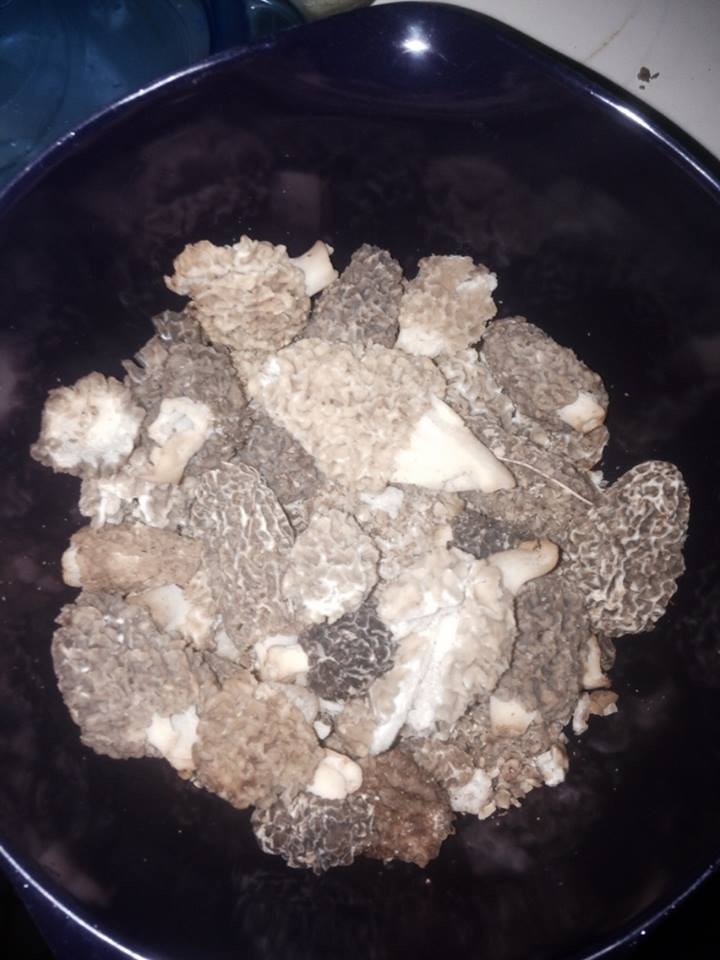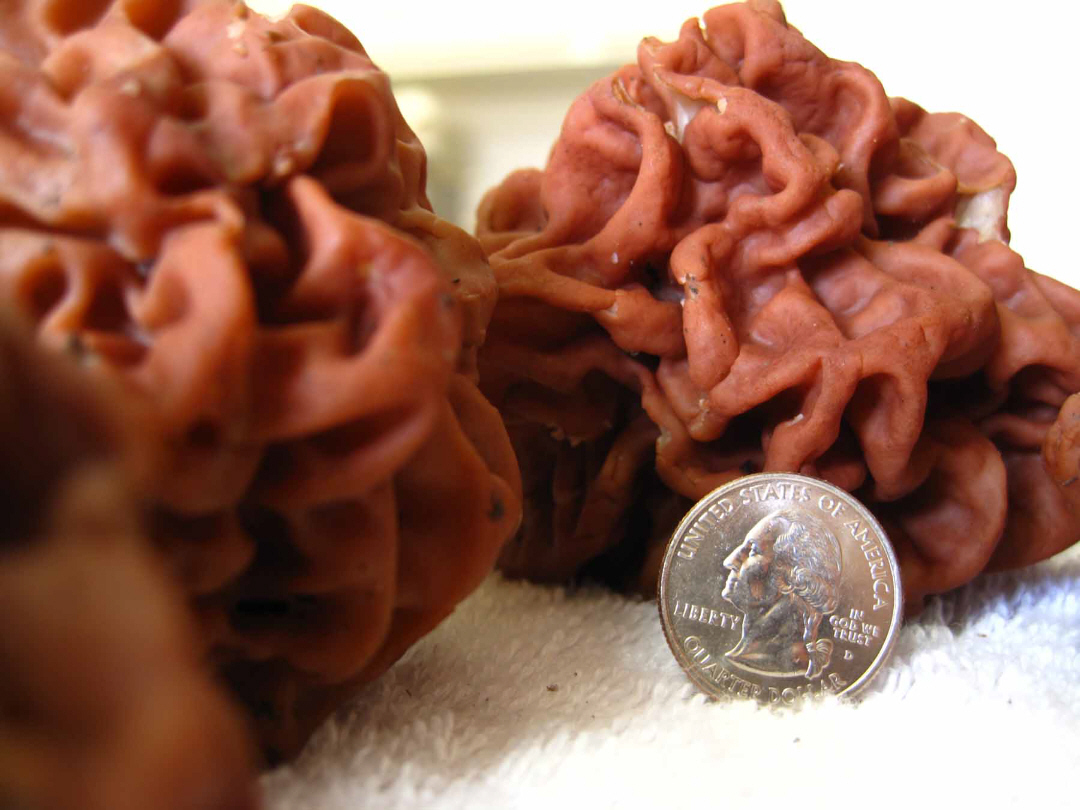
The notion of ‘wild culture’ started for me with fiddlehead (Ostrich fern) picking in the spiny bush of the Ontario woodlands in spring. This eventually led to my partnership with two avid foragers who were also university professors, David Brison and Hank Hedges, both now deceased. The three of us started a seasonal business, Forest Foods, and after a few years of selling to chefs in hotels and restaurants in Toronto and New York, we produced a brochure of our products, from which this article is based.
What better hard-to-tame food to consider this spring but the exquisitely delicious — and extremely difficult to find — morel mushroom.

The morel (Morchella esculanta) and its close relatives are the most hunted of any wild fungi, and generally considered the finest of all edible fungi of North America and the UK, comparable to the truffles of Europe.
WARNING: While this and other true morels are perfectly safe and edible, the mushroom collector should always check the identity of specimens by consulting a good reference book.
DESCRIPTION: The conical head resembles a pine cone, mounted on a thick white hollow stem. The pitted honeycomb-like fruit surface is made up of brain-like hollows and ridges. The colour ranges from pale yellow to brown. Cut open, the head is also hollow.

My son picked this motherlode 10 days ago in Toronto. Older morels picked slightly past their prime still have plenty of flavour. Photo by Morgan Smith.
FOUND WHERE: The morel grows in dry, sandy areas. The season varies across the United States and Europe, but typically arrives in the spring months for most regions. Typically they are found in the dry parts of moist areas, around dying or dead elm, sycamore and ash trees, old apple orchards and maybe even in your own back yard. The morel is somewhat baffling in its habitiat. Ground cover varies and chances are that each patch of mushrooms discovered is growing in different conditions.
Many variables — air temperature, ground temperature and rain levels — impact the growing cycle and bounty of the crop. Many studies observe the where and why of morels and how they make their grand appearance in certain conditions and not others. Almost every mushroom hunter will have a few SWATS (Scientific Wild Ass Theories) of his or her own, some with merit. Contrary to what some believe, morels do not pop up over night, and at times take 10 days to appear. See RELATED LINKS below.
STORAGE: Fresh specimens keep ten days in refrigerator. Can be frozen or dried and reconstituted.
NUTRITION (estimates): Like most mushrooms, morels contain a high proportion of protein, up to 60 percent. Also a source of several minerals, including trace elements. A gourmet's delight, with a taste that can't be tamed!

This 2006 morel progression sighting map of the US and Canada is broadly indicative of seasonal yields. Photo credit. View a series of morel progression sightings maps for 2014 here. If you are aware of a map similar to this one for the UK or Europe, please let us know.
HOW USED: Morels are absolutely delicious when simply fried in butter with salt and freshly ground pepper — possibly with garlic — and served on toast. They can also be used to add their unique flavour to meat dishes, casseroles, omelettes or eggs en cocotte, or chopped up and used in sauces to serve with steak. Raw morels are mildly toxic and must be cooked before eating. Do take the time to clean them carefully to remove any grit or soil, but washing, for we purists, is not recommended; a soft brush of cloth can remove the unwanted bits. Morels are often used dried and are excellent in all mushroom dishes; particularly good with chicken.
SPINACH & MORELS WITH MUSTARD DRESSING
by Jurgen Patrick, former head chef, The Four Seasons Hotel, Toronto
160 grams (5 1/2 ounces) spinach leaves, trimmed and cleaned
160 grams (5 1/2 ounces) fresh morels, trimeed, cleaned and blanched
4 shallot, finely ficed
80 grams (3 ounces) bacon, friend crisp
1 tbsp dried mustard
1 cup olive oil
3 tbsps red wine vinegar
Sat and pepper to taste
Sauté cleaned morels in butter with shallots and bacon. Season with salt and pepper.
Make dressing by combining mustard, oil, salt and vinegar. Combine salt with vinegar and mustard before adding oil.
Toss spinach with dressing and garnish with sautéed morels and bacon.

Morels found in one week in a reader's front yard in a small town in Southern Ontario, May 14, 2017. Abundant rainfall has boosted morel crop this spring.
RELATED LINKS
• Is the wild too wild for you? Grow your own morels!
• Guide to identifying mushrooms.
* The false morel: do not ingest, extremely toxic.

This article was first published in The Journal of Wild Culture on May 20, 2014.

WHITNEY SMITH is the Publisher/Editor of The Journal of Wild Culture.
Additional research by LISA ANN WILSON.

Comments
Things are suddenly turning
Things are suddenly turning green. So exciting after such a long winter. And thanks for reminding us of what's coming up very soon around heard. So darn delicious. And you can't beat foraging.
Add new comment